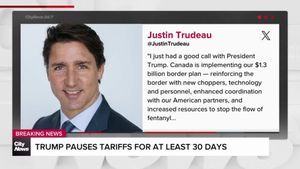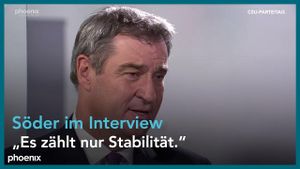The countdown is on for the 2025 German Federal Election, and with just weeks to go, voters are being equipped with resources to make informed decisions. A centerpiece of this initiative is the Wahl-O-Mat, a tool provided by the Bundeszentrale für politische Bildung, set to launch on February 6, 2025, around midday. This online platform aims to align individuals' political stances with those of various parties vying for election.
Designed to demystify party platforms, the Wahl-O-Mat consists of 38 political theses derived from the positions of the 29 parties participating in this election, enabling voters to ascertain the best match for their beliefs. Users can signify their positions by agreeing, disagreeing, remaining neutral, or skipping questions altogether, offering flexibility and personalization. The process doesn't end there; after completing their responses, people can weigh certain issues more heavily, thereby adjusting the final tally to reflect their priorities more accurately.
The success of the Wahl-O-Mat can be traced back to its inception in 2002, where it has witnessed over 130 million uses across numerous elections, ranging from local to European matters. Notably, the creation of the theses involves the insight of young voters aged 18 to 26, who gather to formulate relevant topics three months prior to elections. They meet for workshops to create questions, utilizing the parties' election programs as their foundation. Guidance also extends from experts and educators, ensuring the final set of theses covers diverse and pressing themes.
Critics and supporters alike appreciate the tool's simplicity and efficacy. According to users' feedback from past iterations, more than 90% stated having established positions before engaging with the Wahl-O-Mat, indicating its role as not merely advisory but as a confirmation aid. The Bundeszentrale emphasizes the purpose is educational rather than prescriptive, underscoring its value for voters seeking clarity.
The Wahl-O-Mat is not alone; alternative tools such as Real-O-Mat add diversity to voter resources. Unlike the Wahl-O-Mat, Real-O-Mat focuses on the actual voting patterns of parties, providing insights to what extent each party has aligned with certain legislative actions.
Participation varies across regions, with some smaller parties like VOLT and MLPD appearing alongside the larger, more established groups such as SPD and CDU on ballots. This election will see 18 parties contending for votes solely within North Rhine-Westphalia, but nationally, the tally grows to 29 different parties, presenting voters with multiple options.
On February 6, from 11:15 AM onward, voters can access the Wahl-O-Mat tool at Wahl-O-Mat.de, giving them tools not just to assess their compatibility with political platforms but to encourage broader discussions on pertinent issues leading up to the election day on February 23.
Whether it's through the accessibility of the Wahl-O-Mat or the call for voter engagement from civil organizations, there’s no shortage of resources empowering citizens to make informed electoral choices. The help from such tools not only alleviates the pressure of deciphering extensive party programs but also encourages overall political engagement within Germany, fostering democracy through informed participation.



